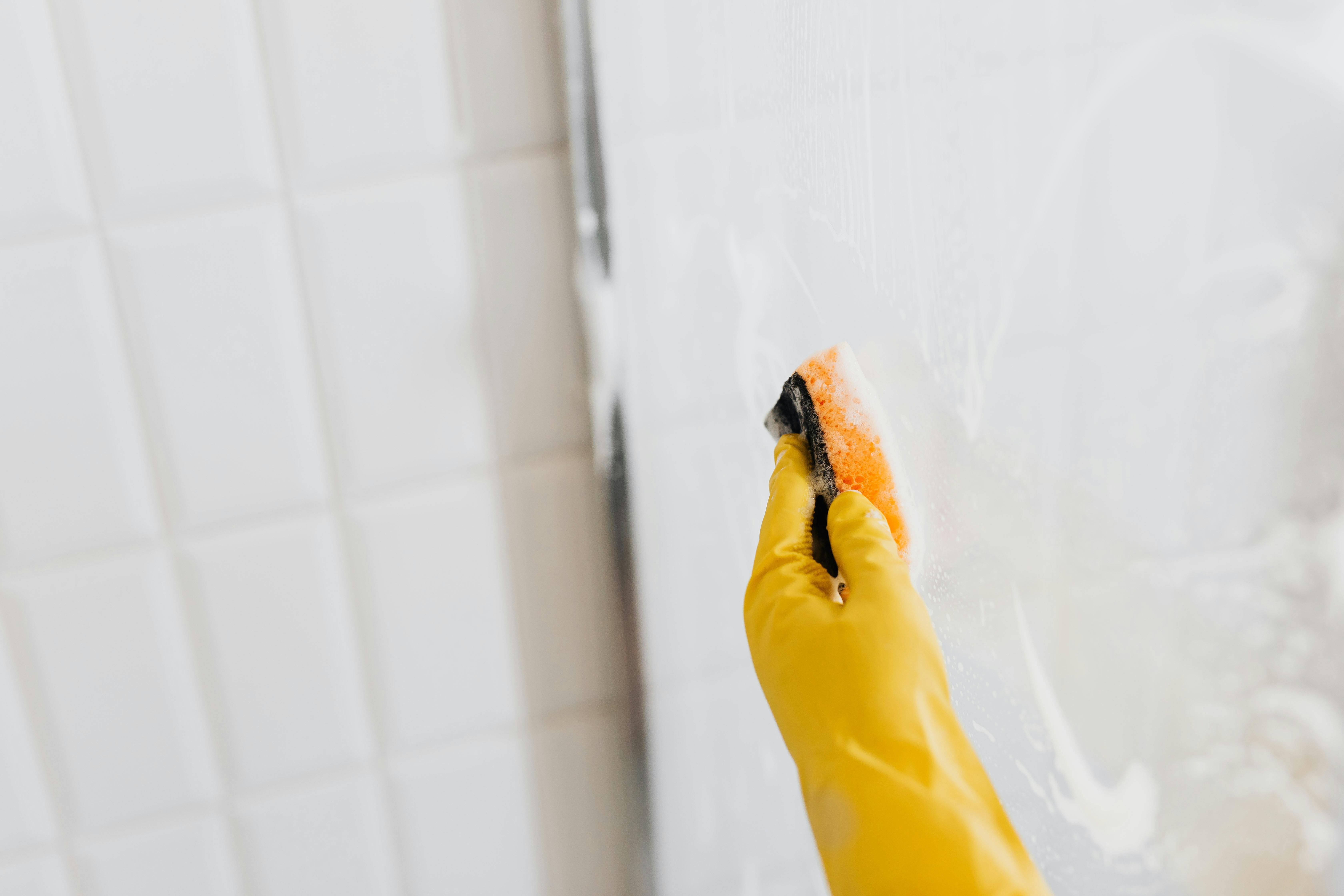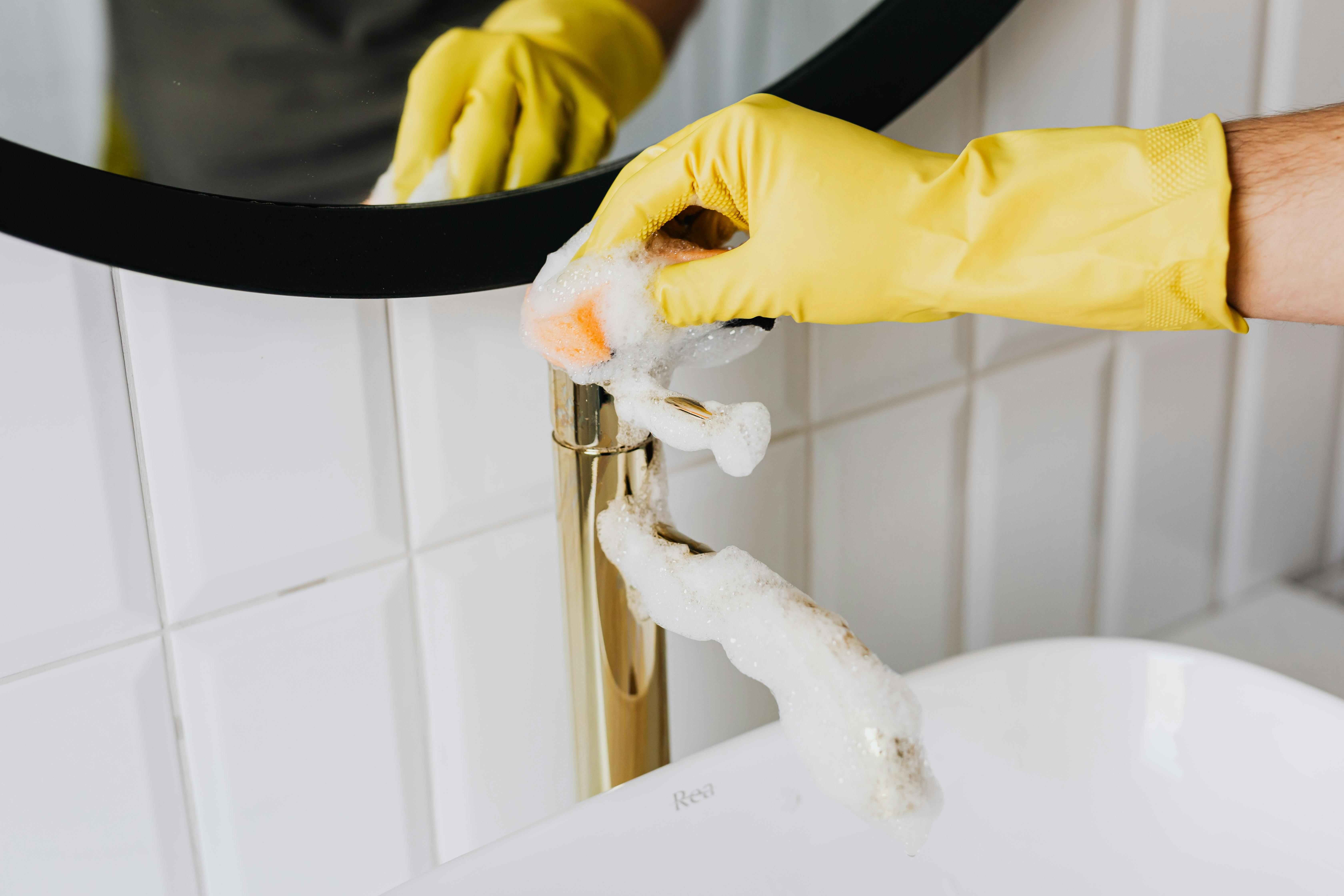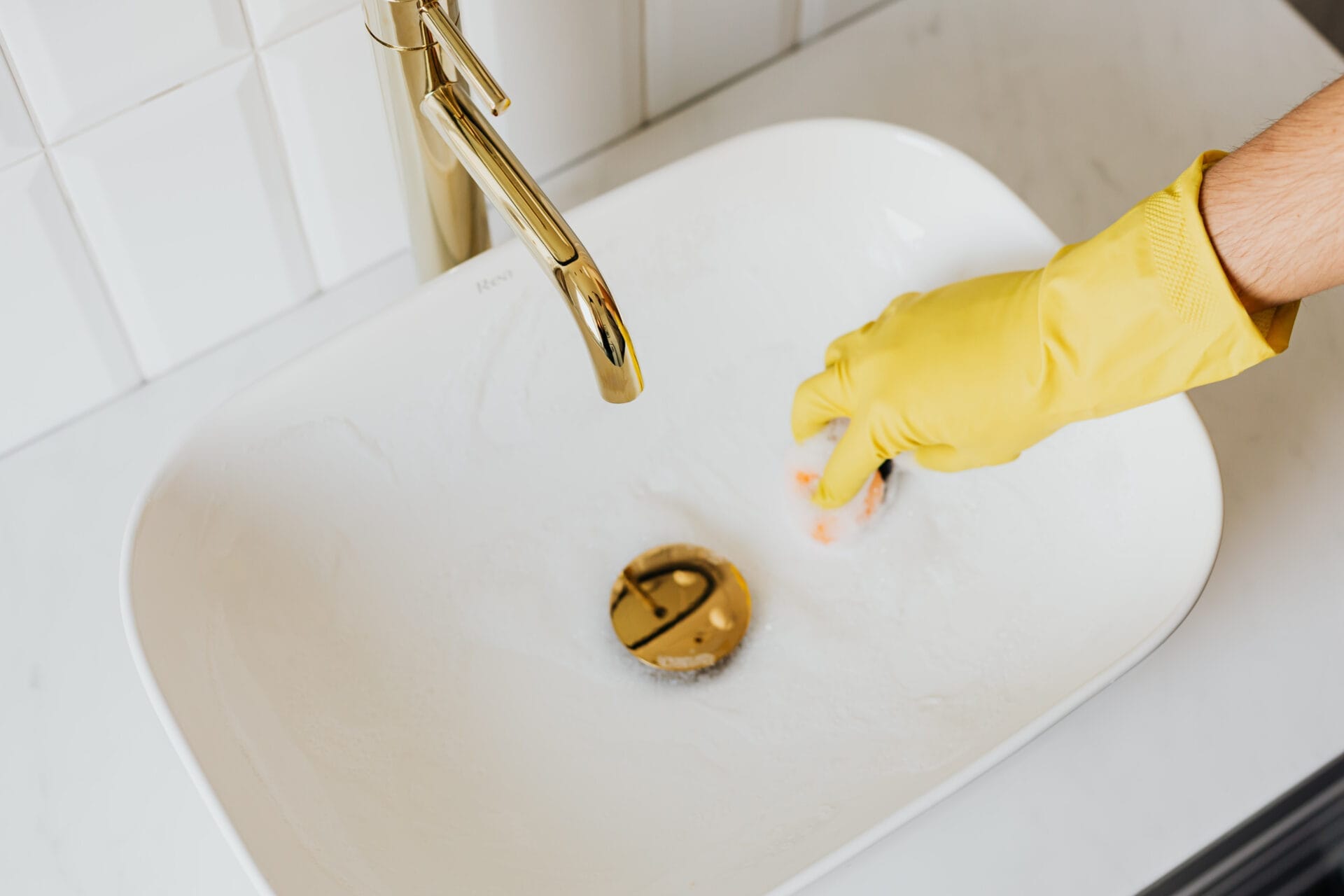Yellow water is a term used to describe discolored water that can occur in both private and public water systems. This can be caused by sediment or chemicals in the water, and it can be alarming to see. Many people wonder if it is safe to bathe in yellow water, especially if they are unfamiliar with the cause of the discoloration. In this article, we will discuss whether yellow water is safe to bathe in and what precautions you should take.No, yellow water is not safe to bathe in. It is likely caused by a high concentration of iron or manganese in the water, which can be hazardous to your health. Additionally, yellow water can be a sign of contamination from bacteria or other contaminants. To ensure your safety, it is best to avoid bathing in yellow water.
What Causes Yellow Water?
Yellow water is a common occurrence in households and is caused by a variety of factors. The most common cause of yellow water is the presence of iron or manganese in the water supply. Iron and manganese can enter the water supply through natural deposits, or they can be introduced through corroding pipes or other sources. Iron and manganese can cause discoloration, staining on fixtures and laundry, and a metallic taste to the water. Other causes of yellow water include high levels of sulfur, sediment buildup in pipes, algae, or even dyes used to color swimming pools.
Iron and manganese are often present in groundwater sources such as wells and springs, but it can also come from corroding pipes or other sources. When iron and manganese are present at high levels, it can cause yellowish stains on clothes, fixtures and dishes. In addition to staining, iron may also give the water an unpleasant taste or odor. If these contaminants are left untreated for long periods of time, they may also damage plumbing fixtures.
Sulfur is another cause of yellow water that is commonly found in well-water supplies. Sulfur can react with oxygen when it enters the system causing an orange-yellow tint to the water that may have an unpleasant odor associated with it. This type of discoloration is often accompanied by other signs such as a metallic taste in the drinking water or white residue on fixtures or laundry items.
In addition to iron, manganese and sulfur, sediment buildup in pipes due to corrosion can also cause yellowish discoloration in tap water. Corrosion occurs when there are high levels of chlorine combined with minerals such as calcium carbonate which react with each other over time causing scale buildup inside pipes which can eventually lead to discoloration of the tap water when released from taps into households.
Algae growth can also be a factor leading to yellowish-brownish tinted tap water due to their pigments being released into the supply system when bloom occurs during warm weather months. Dyes used for coloring swimming pools may also find their way into public drinking systems if proper filtration systems aren’t maintained properly leading to yellowish discolored drinking supplies as well as other health risks associated with ingesting contaminated waters from pools sources such as chemicals and bacteria
Potential Health Risks of Bathing in Yellow Water
Bathing in yellow water can be a cause for concern due to the potential health risks it may pose. There are a variety of factors that can lead to yellow water, including iron, manganese, and sulfur, as well as contamination from bacteria or algae. These elements can cause skin irritation and other health issues when exposed to them through bathing or drinking. Additionally, yellow water can be an indicator of other dangerous contaminants in the water such as lead or copper.
Iron and manganese are naturally occurring elements found in many public water supplies. When present in high concentrations they can give the water a yellow tinge and a metallic taste. Both of these elements are known to cause skin irritation when exposed to them through bathing or drinking. Additionally, long-term exposure to high levels of iron can lead to anemia and liver damage. Manganese is particularly concerning for children as it has been linked with cognitive issues when ingested over long periods of time.
Sulfur is also another common element that can lead to yellow water. Sulfur is not toxic but it does have a distinct smell and taste which may be unpleasant for some people. Sulfur is also known to cause skin irritation and eye irritation when exposed to it directly.
Finally, yellow water may also be an indicator of bacterial or algae contamination which could potentially cause serious health risks. Bacteria can enter the public water supply through sewage leaks or runoff from agricultural activities and if ingested could cause severe gastrointestinal distress such as diarrhea, vomiting and cramps. Algae blooms can also occur in areas where there is an abundance of nutrients present in the water which could lead to nausea, headaches and respiratory problems if inhaled or ingested directly.
For these reasons it is important that any discoloration in your tap water should be investigated by your local utility authority before consuming or using for bathing purposes. If you have any concerns about your tap water it’s best not to take any chances with your health by continuing to use it until you know what might be causing the discoloration or contamination issue.
Filtering Out Harmful Contaminants from Yellow Water
Yellow water is often a sign of the presence of harmful contaminants, and it’s important to filter them out before using the water for any purpose. Fortunately, there are several methods you can use to effectively remove pollutants from yellow water. These methods include using activated carbon filters, reverse osmosis systems, and ultraviolet (UV) light treatments.
Activated carbon filters are extremely efficient at removing a wide range of contaminants from yellow water, including chlorine and organic compounds such as pesticides and herbicides. The filter contains an absorbent material that traps the pollutants as the water passes through it. The activated carbon filter should be regularly replaced to ensure that it is working effectively and providing clean water.
Reverse osmosis systems push contaminated yellow water through a fine membrane that blocks out impurities while allowing pure water molecules to pass through. This process removes most dissolved solids such as salts, minerals, and other organic materials from the water. Reverse osmosis systems are often used in combination with activated carbon filters for optimal results.
Ultraviolet (UV) light treatments involve exposing contaminated yellow water to intense UV light which kills off any bacteria or viruses present in the water. This method does not remove pollutants from the water itself but instead makes them harmless so they can be safely consumed without fear of contamination. UV treatments do require additional equipment such as special lamps or bulbs, so they may not be suitable for all situations.
Overall, filtering out harmful contaminants from yellow water is possible with different methods such as activated carbon filters, reverse osmosis systems, and ultraviolet (UV) light treatments. It’s important to choose the right technique for your needs in order to ensure safe drinking or bathing with clean and healthy water.
Checking for Contaminants in Your Water
Water contamination is a major concern for many people, as it can have a major impact on our health. It is important to check your water regularly for potential contaminants that may be present. There are several ways to do this, including testing kits, laboratory tests, and home tests.
Testing kits are an easy and convenient way to check for contaminants in your water. These kits typically contain test strips or liquid reagents that react with the contaminants present in the water. Once the reaction occurs, the kit will provide an indication of whether contaminants are present and at what levels.
Laboratory tests can also be used to check for contaminants in your water. This method involves sending a sample of the water to a laboratory where it can be tested more thoroughly than with a testing kit. The lab will then provide you with a report of the results and any recommended actions that need to be taken.
Home tests are another option when checking for contaminants in your water. Home test kits usually contain a sample bottle and instructions that allow you to take a sample of the water and test it yourself at home. The results of these tests will indicate whether there are any potential contaminants present and how much of each contaminant is present in the sample.
No matter which method you choose, it’s important to regularly check your water for potential contaminants so you can take action if necessary. Doing so will help ensure that your family has access to safe and clean drinking water.

Bathing in Discolored Water Safety Tips
Discolored water can be concerning, especially when it comes to bathing. There is a chance it could contain high levels of bacteria or other contaminants that could make you sick or cause skin irritation. To stay safe when bathing in discolored water, follow these safety tips:
1. Test the water before getting in. Test strips are available from most hardware stores and can tell you whether the water is safe to bathe in or not. If the test strip indicates unsafe levels of bacteria, do not get into the bath until the levels have returned to normal.
2. Avoid drinking the water. Discolored water can contain high levels of contaminants that would be dangerous to ingest – so it’s best to avoid drinking it altogether.
3. Don’t bathe for too long. Bathing for extended periods of time can lead to skin irritation or infections if the water contains contaminants that are harmful to your skin and body.
4. Use a shower filter if possible. Shower filters can help reduce the level of contaminants present in the water and make it safer for you to bathe in discolored water without fear of getting sick or having skin reactions due to contamination levels being too high.
5. Take caution when using soaps and shampoos. Soaps and shampoos may contain ingredients that could react with chemicals present in discolored water, causing irritation or even health problems if ingested – so take extra care when using them in discolored bathwater.
By following these safety tips, you can help ensure that your baths are safe and free from any potential health risks associated with bathing in discolored water.
How to Treat Discolored Water
Discolored water can be unattractive and unappetizing, but it doesn’t necessarily mean it is unsafe to drink. Discoloration may result from excessive iron, manganese, or tannins in the water. Depending on the cause of discoloration, there are a few methods to try in order to treat it.
The first step is to identify the source of the discoloration. If you are on a well system, you may want to consider testing for iron, manganese, and tannins. If your water is from a municipal source, you can contact your local water authority for more information about the cause of your discoloration.
Once you have identified the source of the discoloration, you can use a chemical treatment such as chlorine or potassium permanganate to remove it from your water supply. Chlorine will oxidize iron and manganese which will cause them to react with other particles in the water and settle out as sediment at the bottom of a tank or reservoir. Potassium permanganate works by breaking down organic matter such as tannins which can lead to discoloration.
Another way to treat discolored water is by installing a filter system such as whole house filtration systems or point-of-use filters which can remove sediment and other particles that cause discoloration in your home’s drinking water supply. These systems are easy to install yourself or they can be professionally installed depending on your preference.
Finally, if you suspect that there may be bacteria present in your water supply due to discoloration, it is important to disinfect it with chlorine or ultraviolet light before drinking it. Boiling the water for one minute will also help kill any bacteria present in the water supply.
By following these steps and understanding how each method works best for treating discolored water, you can improve both its appearance and taste while ensuring that it is safe for consumption!
Testing the Safety of Discolored Water
Discolored water can be an indication of various problems in the water supply system. It is important to test the safety of discolored water before using it for drinking, cooking or cleaning purposes. There are several methods that can be used to test the safety of discolored water.
The first and most common method is to have a professional laboratory test the water sample. Such tests involve a detailed analysis of the properties and characteristics of the water. This includes testing for potential contaminants, such as bacteria, viruses, heavy metals, and organic compounds. The results of such tests can provide useful information about the safety and quality of the water.
Another approach is to perform a visual inspection of the discolored water. This involves looking for signs that could indicate contamination or other problems with the supply system. For instance, if there are visible particles or bubbles in the water, this could be an indication that there are contaminants present in the supply system.
In addition to laboratory testing and visual inspections, some municipalities also offer programs for citizens to test their own discolored water samples at home using kits designed for this purpose. These kits usually contain materials needed for testing, such as reagents and indicator papers, as well as instructions on how to use them properly. The results from these tests can then be compared with standards set by local authorities in order to determine whether or not there are any problems with the water supply system.
Lastly, it is important to remember that even if a sample tests safe according to standards set by local authorities, it may still not be safe for consumption due to other factors such as taste or smell. Therefore, when dealing with discolored water it is essential to use your own judgement when deciding whether or not it is safe for consumption.

Conclusion
In conclusion, yellow water is not safe to bathe in. Some of the reasons for this are that it could be caused by a corroded pipe or a water heater, which could introduce harmful bacteria and contaminants into the water. It could also be caused by chemical runoff from nearby industrial sites. Other causes include high levels of iron or manganese in the water supply, or a reaction between chlorine and organic matter in the pipes.
No matter what the cause is, yellow water should not be used for bathing. It is important to contact a professional plumber or your local water authority to determine the cause and find a solution. Taking action as soon as possible can help prevent any potential health risks associated with contaminated water.
In conclusion, it is best to avoid using yellow-colored water for bathing and other activities that involve contact with skin. It is important to rule out any health risks associated with bathing in yellow-colored water and consult with an expert if necessary.

